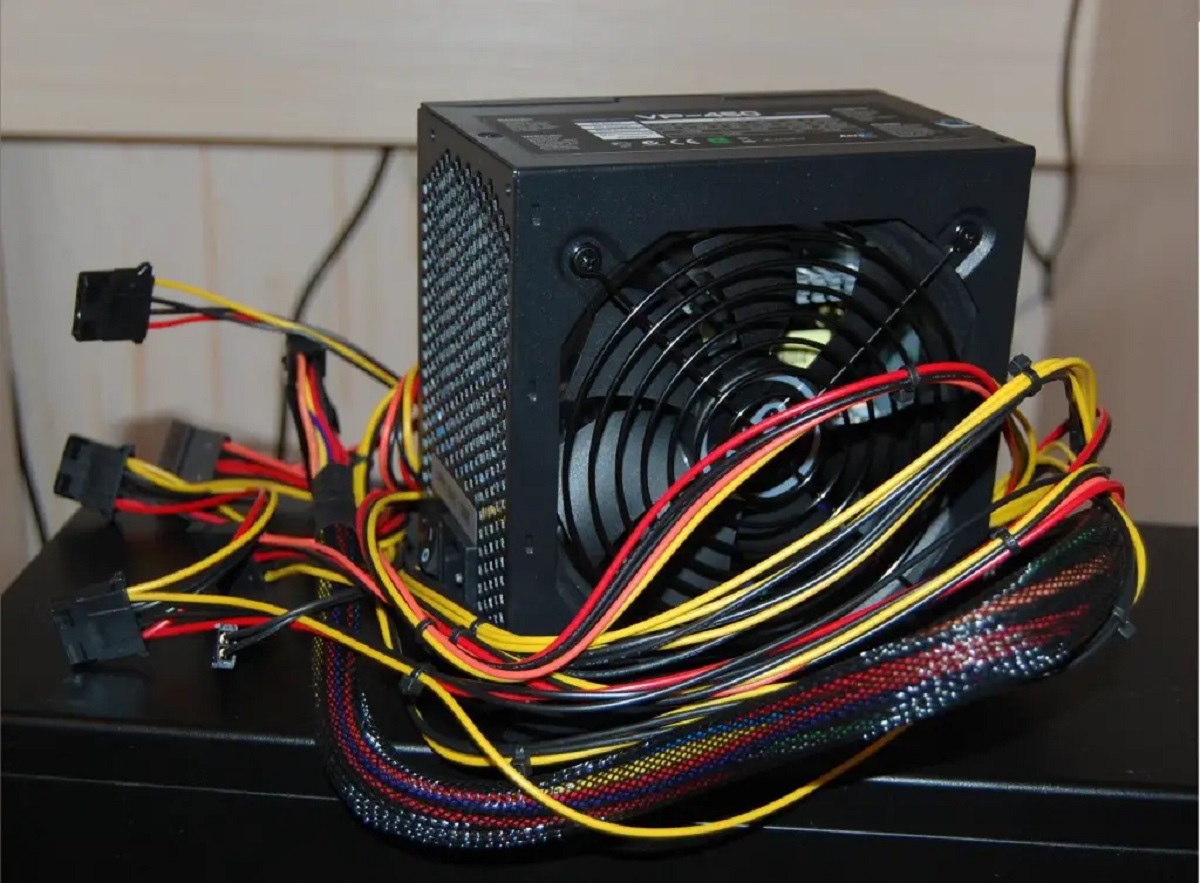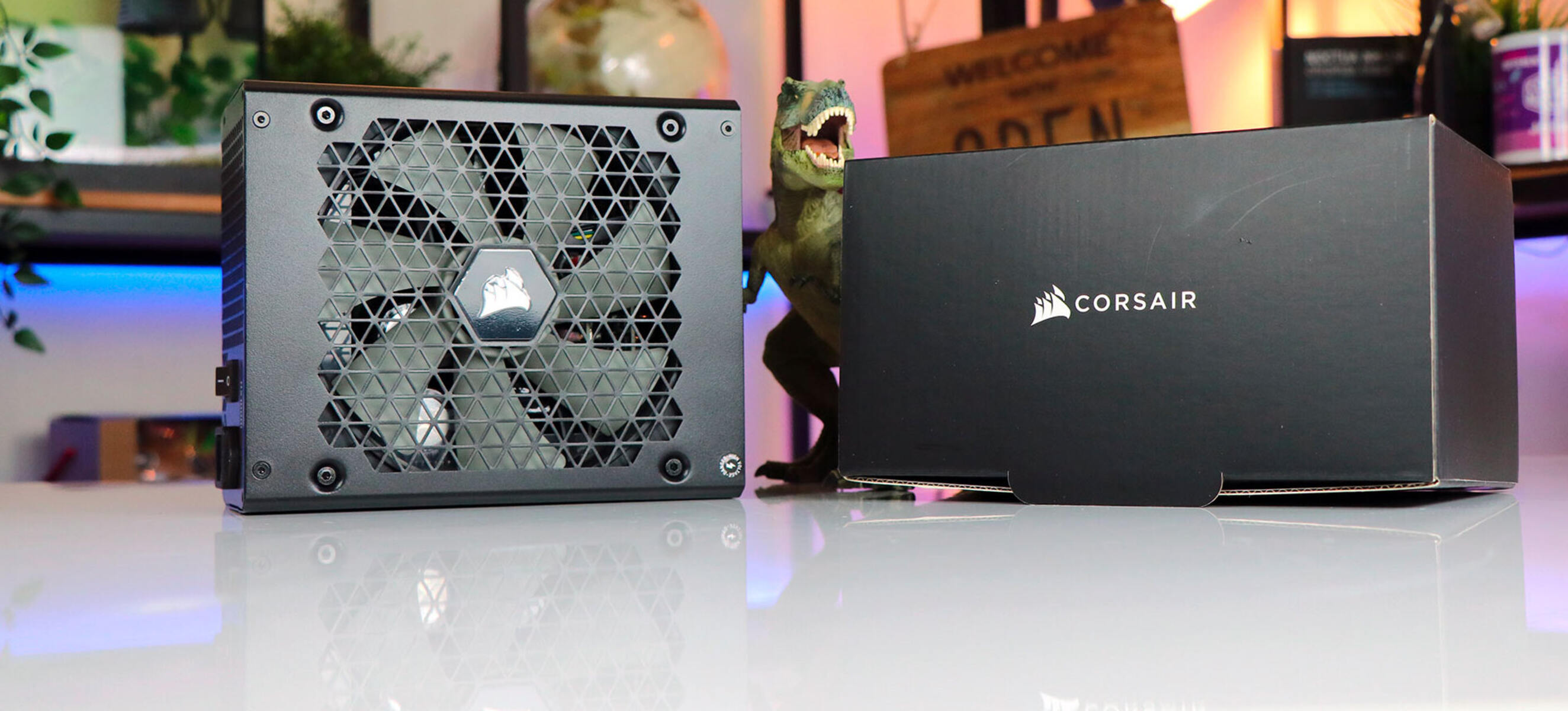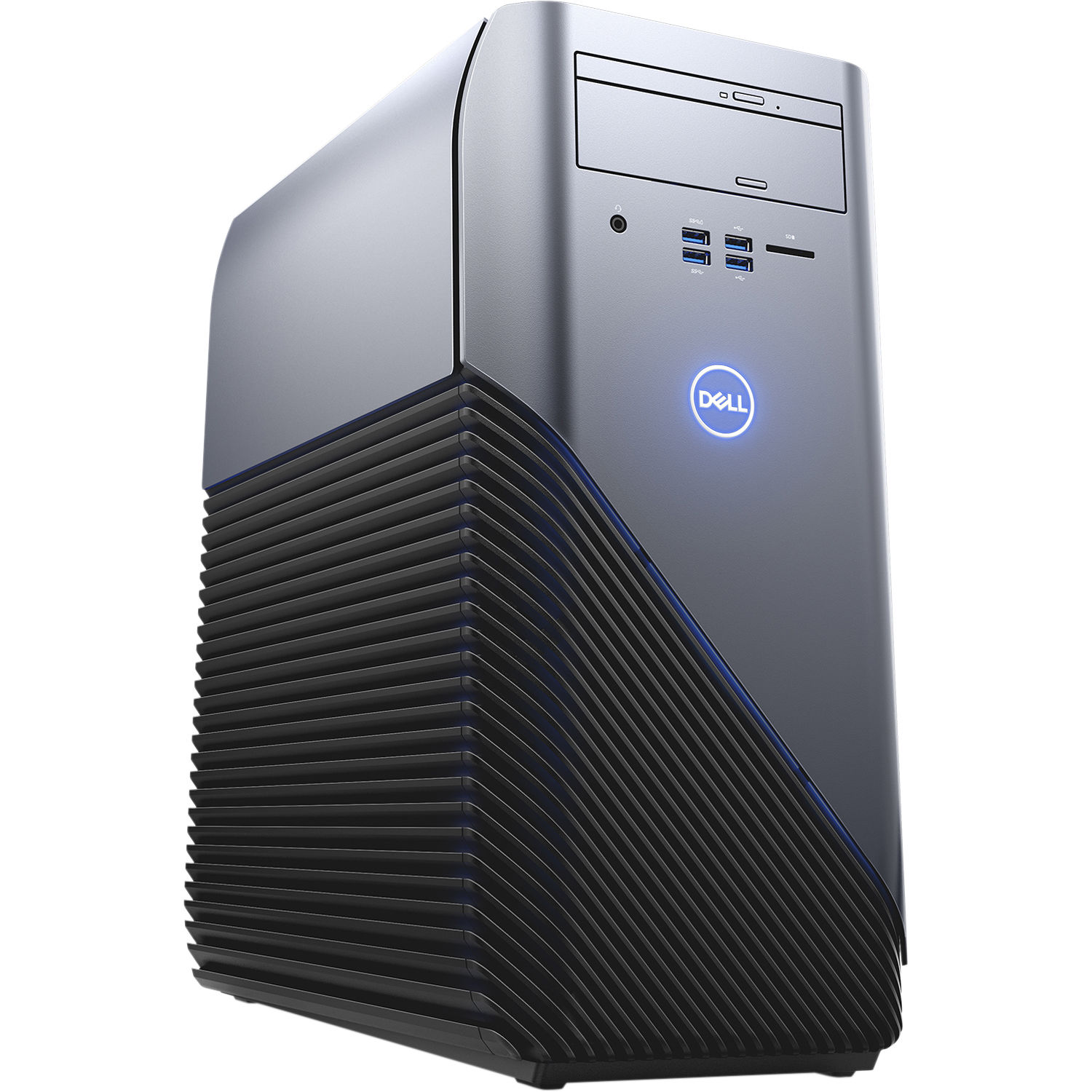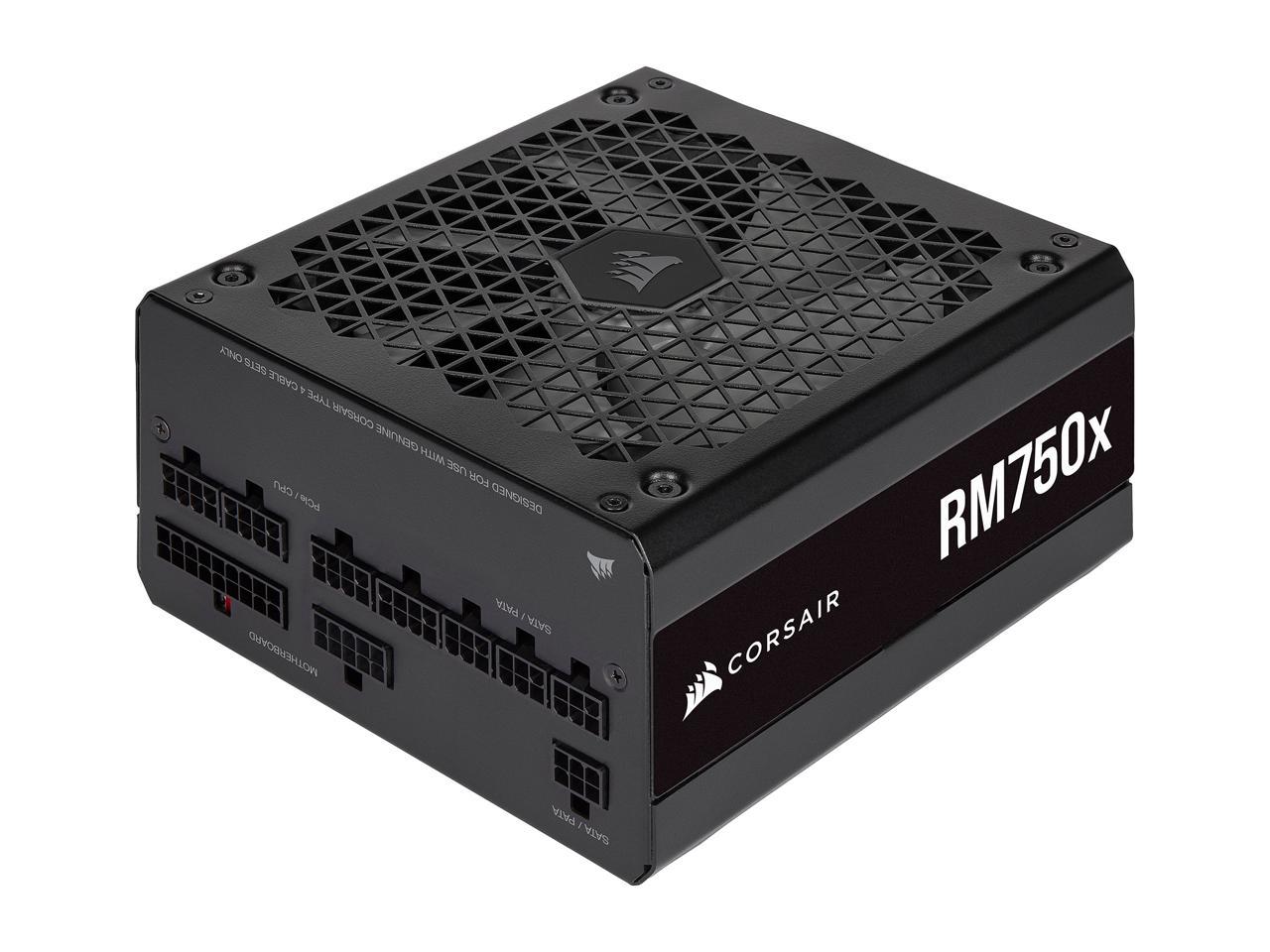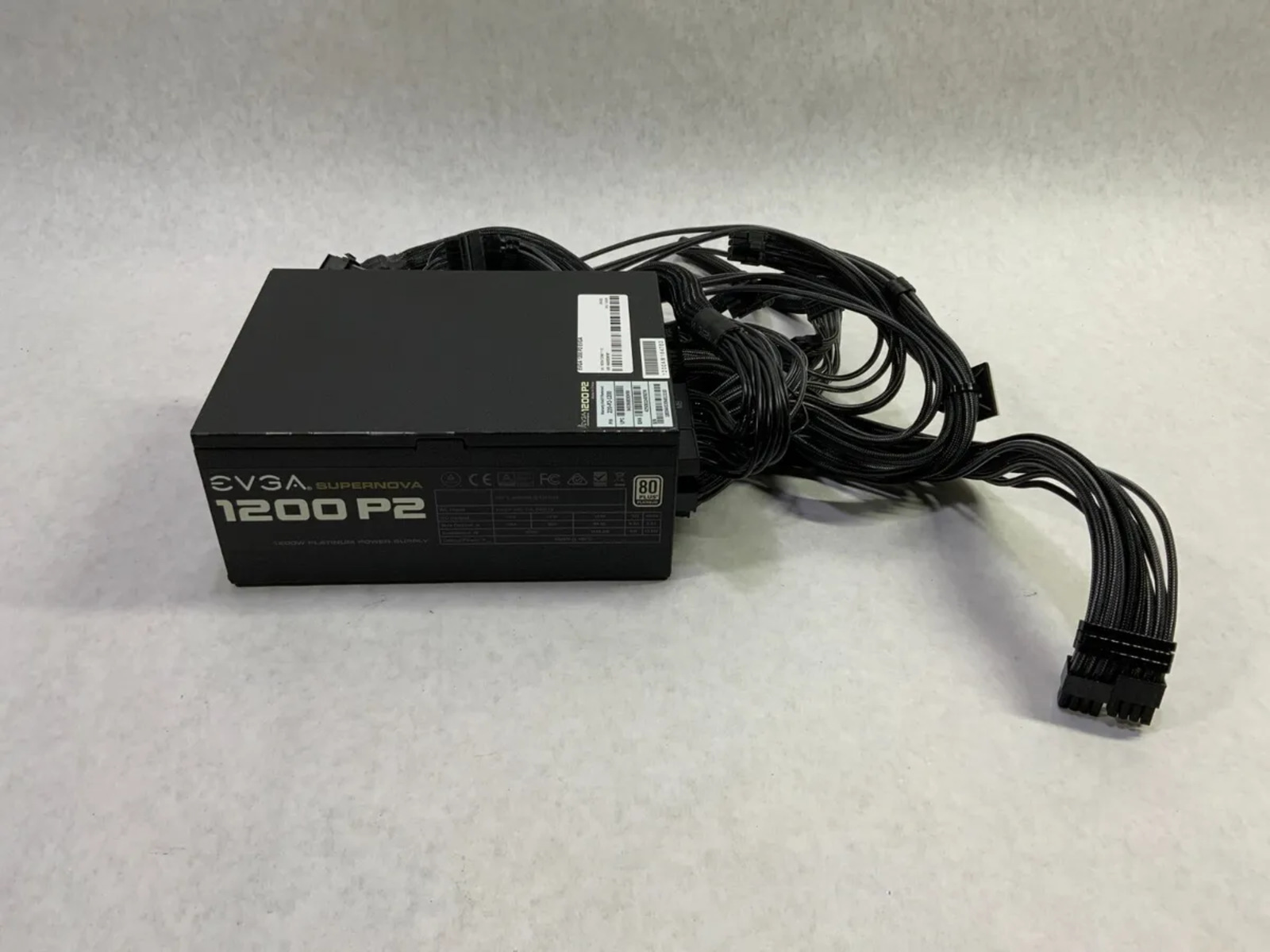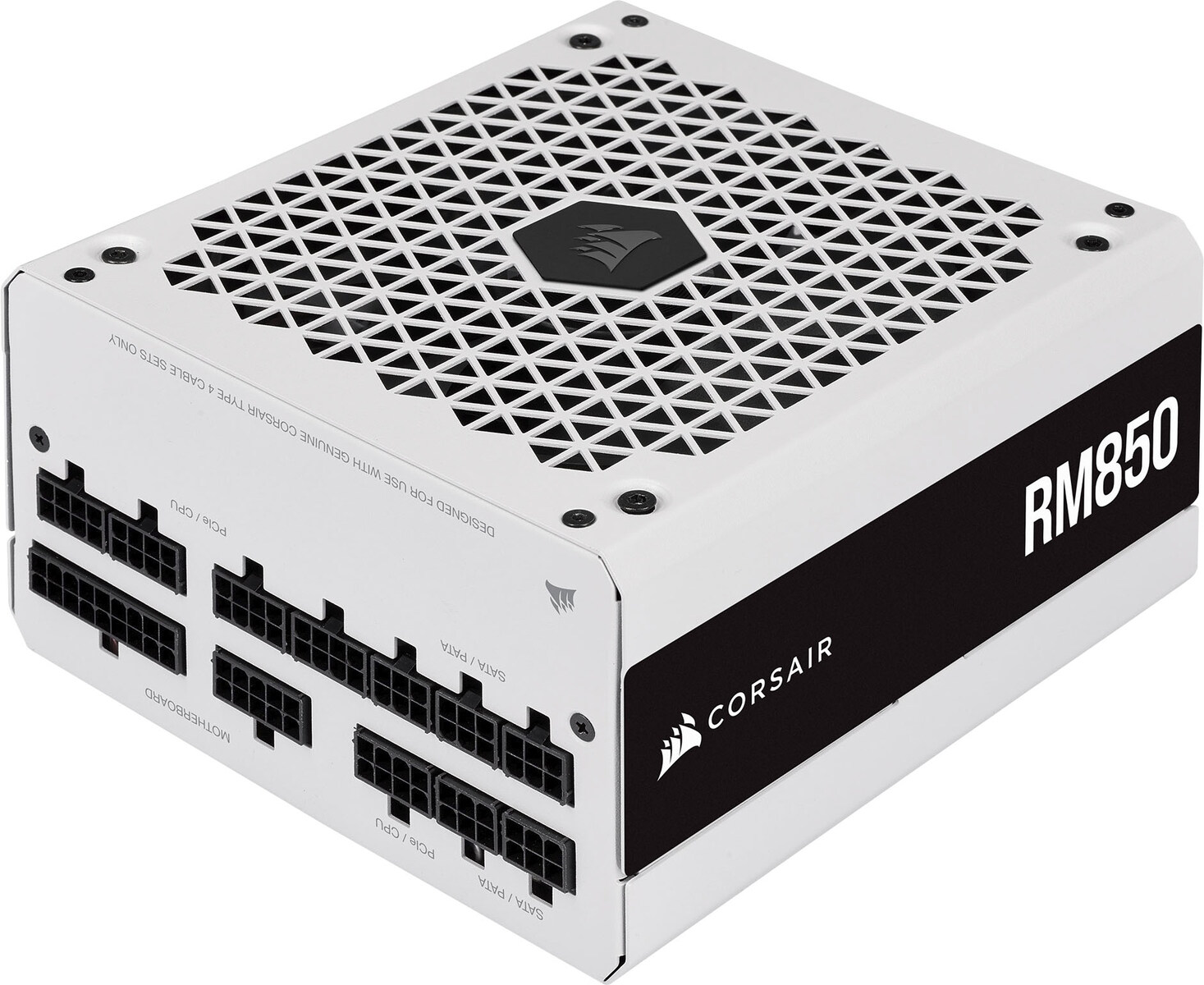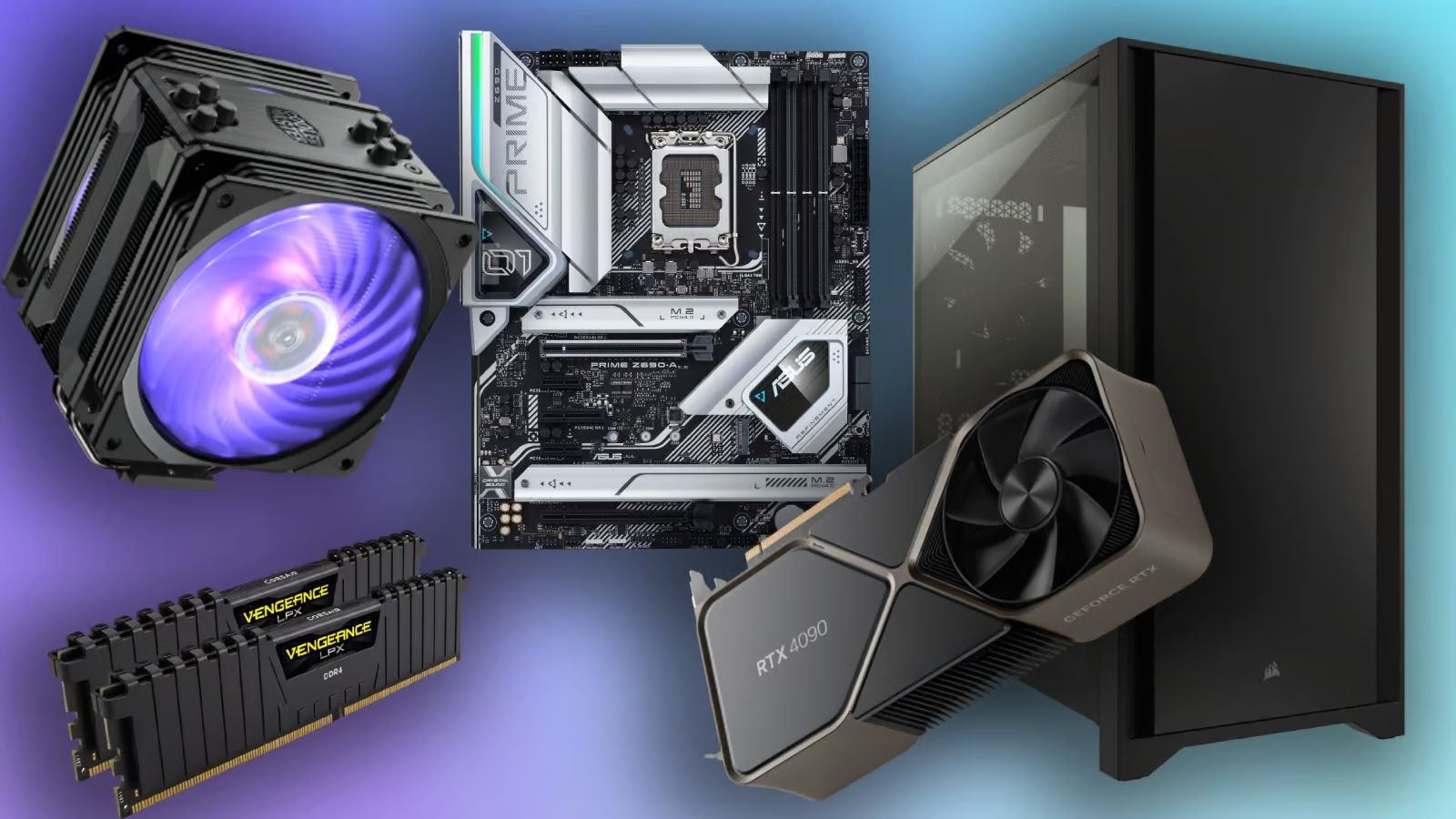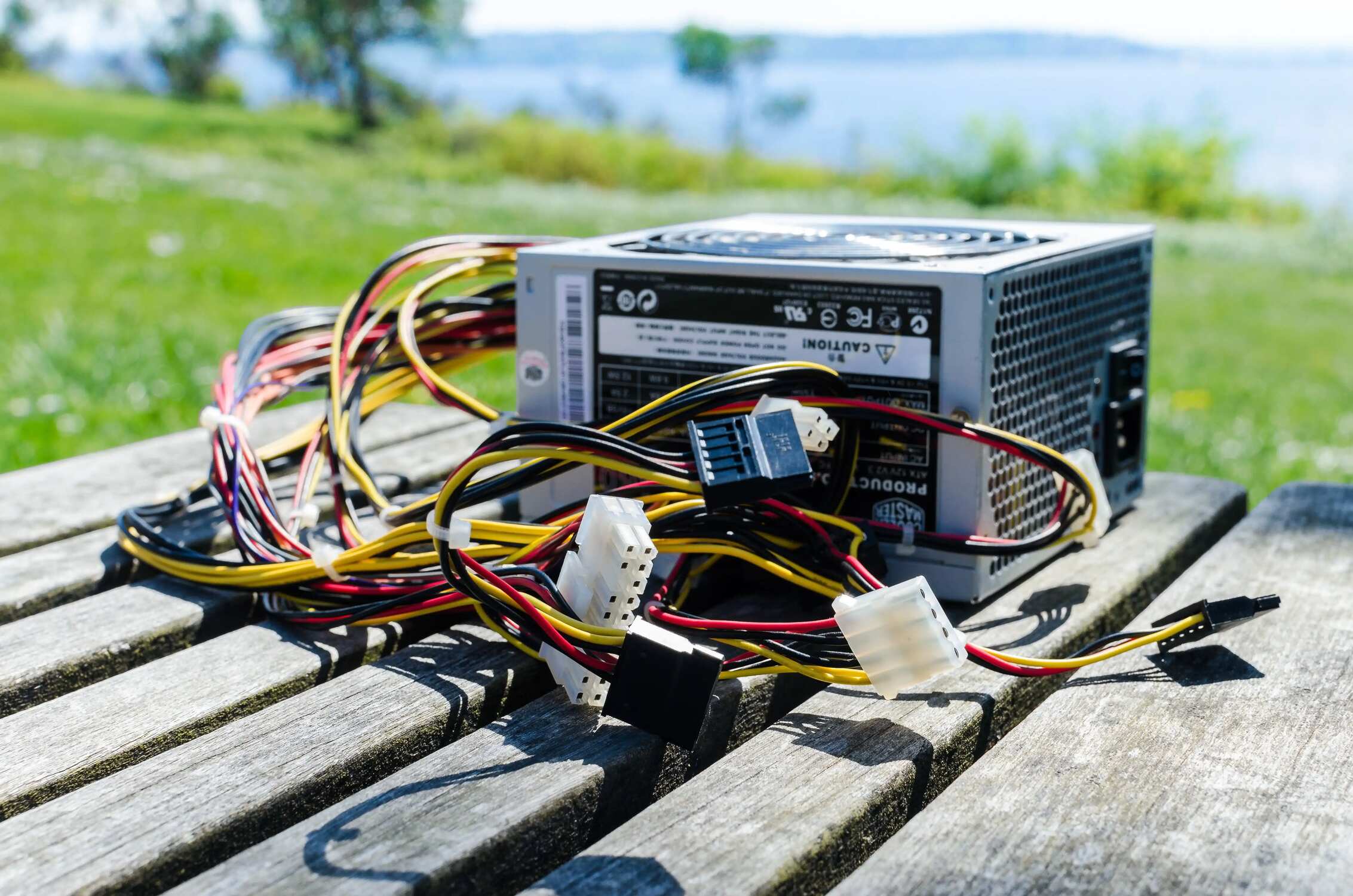Introduction
A computer is a complex machine that consists of various components working together to perform different functions. One crucial component that often goes unnoticed is the Power Supply Unit (PSU). The PSU is responsible for supplying electrical power to all the other components of the computer, ensuring their proper functioning.
While the PSU may not be as glamorous as the latest graphics card or processor, it plays a vital role in the overall performance and stability of a computer system. Without a reliable and efficient power supply, even the most powerful components would be rendered useless.
In this article, we will explore the importance of a PSU in a computer system, delve into its components and functions, discuss the conversion and regulation of power, explain the concept of voltage rails and connectors, highlight wattage and efficiency ratings, and provide tips for choosing the right PSU for your computer. We will also touch on common troubleshooting issues related to PSUs.
Whether you are a seasoned computer enthusiast or a newbie looking to build your own system, understanding the role of the PSU is essential for ensuring the longevity and optimal performance of your computer. So, let’s dive in and discover the power behind the Power Supply Unit!
Definition of a Power Supply Unit (PSU)
A Power Supply Unit (PSU) is an essential component of a computer that is responsible for converting and regulating the incoming electrical power to provide a consistent and reliable power source for all the other components. It is typically housed in a metal box within the computer case.
The PSU takes the electrical power from the wall outlet or external power source and converts it into the required voltages and currents that different components of the computer need to operate. It provides power to the motherboard, processor, graphics card, storage devices, and other peripherals.
PSUs come in different sizes, capacities, and form factors, depending on the specific requirements of the computer system. They can range from small units with lower wattage for basic desktop computers, to high-performance units with high wattage and advanced features for gaming PCs or workstations.
The PSU acts as the intermediary between the electrical power source and the computer components, ensuring that the right amount of power is distributed to each component according to its requirements. It also protects the computer system from power surges, voltage fluctuations, and other electrical issues that could potentially damage the components.
Overall, the PSU can be considered as the “heart” of a computer system, providing the necessary power for its proper functioning. Without a reliable and stable power supply, the computer would not be able to function, and its components could be at risk of damage or malfunction.
Importance of a PSU in a Computer
The Power Supply Unit (PSU) plays a critical role in the overall performance, stability, and longevity of a computer system. Here are some key reasons why the PSU is important:
- Power Distribution: The PSU is responsible for distributing the appropriate amount of power to each component of the computer. It ensures that the motherboard, processor, graphics card, and other peripherals receive the necessary power to operate efficiently and reliably.
- Component Protection: A PSU acts as a safeguard for the computer components by providing protection against power surges, voltage spikes, and fluctuations. It incorporates various safety features, such as overvoltage protection and short-circuit protection, to prevent any potential damage to the components.
- Stability and Efficiency: A stable and efficient power supply is crucial for the smooth operation of a computer. The PSU regulates the power output, maintaining a consistent voltage and current to the components. This stability ensures that the computer functions properly and reduces the risk of system crashes or hardware failures.
- Expandability and Future-proofing: Choosing a PSU with higher wattage and additional connectors allows for future upgrades and expansion of the computer system. A powerful PSU can support the addition of more demanding components, such as multiple graphics cards or high-performance storage devices, without straining the power supply.
- Aesthetic Considerations: Modern PSUs often come with modular cables and designs that help manage cable clutter inside the computer case. This improves airflow, reduces heat buildup, and enhances the overall aesthetics of the system.
Overall, the importance of a PSU cannot be overstated. It ensures the proper functioning of all the computer components, protects them from electrical damage, provides stability and efficiency, and allows for future upgrades. Investing in a reliable and high-quality PSU is crucial for a reliable and long-lasting computer system.
Components and Functions of a PSU
A Power Supply Unit (PSU) consists of various components that work together to convert and regulate electrical power. Understanding the different components and their functions can give us insights into how a PSU operates. Let’s take a closer look:
- Transformer: The transformer is responsible for converting the high-voltage AC (alternating current) power from the wall outlet into lower-voltage AC power. It steps down the voltage to a level that can be used by the PSU.
- Rectifier: The rectifier converts the AC power into DC (direct current) power. It uses diodes to convert the alternating current into a unidirectional flow of electrons.
- Filter Capacitors: The filter capacitors smooth out the DC power, removing any ripples or fluctuations. They store electrical energy and release it when the demand for power increases.
- Voltage Regulator: The voltage regulator ensures a stable and constant output voltage. It regulates the voltage levels to meet the specific requirements of the computer components.
- Protection Circuits: PSUs incorporate various protection circuits to safeguard the computer system. These circuits include overvoltage protection, undervoltage protection, overcurrent protection, and short-circuit protection, among others. They monitor the power output and take preventive measures to prevent damage to the components.
- Fan: The fan is an essential component of the PSU as it helps in cooling the unit. It ensures that the PSU operates within a safe temperature range, preventing overheating and prolonging the lifespan of the components.
- Connectors: PSUs come with a variety of connectors that provide power to different components of the computer. These connectors include the main ATX connector for the motherboard, CPU power connectors, SATA power connectors for storage devices, PCI-E connectors for graphics cards, and peripheral connectors for other devices.
- Modular Cables: Many modern PSUs offer modular cables, allowing users to connect only the necessary cables. This helps in cable management, reducing clutter inside the computer case and improving airflow.
All these components work together to ensure that the PSU converts and regulates the incoming power effectively, providing a stable and reliable power source to the computer components. Understanding the functions of these components can help in troubleshooting PSU-related issues and making informed decisions when choosing a PSU.
Conversion and Regulation of Power
One of the primary functions of a Power Supply Unit (PSU) is to convert and regulate the incoming electrical power to provide a consistent and reliable power source for the computer components. Let’s explore how the PSU accomplishes this:
Conversion: The PSU first converts the high-voltage AC (alternating current) power from the wall outlet into lower-voltage DC (direct current) power that the computer components require. The conversion process involves the transformer and rectifier components of the PSU.
The transformer steps down the voltage to a level suitable for the PSU’s operation. It reduces the high-voltage AC power to a lower voltage level, which can range from 12V, 5V, and 3.3V, depending on the specific requirements of the computer system.
The rectifier component then converts the AC power into DC power. It consists of diodes, which allow current to flow in one direction, converting the alternating current into a unidirectional flow. This DC power is then used to power the computer components.
Regulation: After the conversion, the PSU regulates the output voltage and current to ensure stability and meet the requirements of the components. This is achieved through the voltage regulator component.
The voltage regulator monitors the output voltage and adjusts it as needed. It helps maintain a stable voltage level by compensating for any fluctuations or variations in the input voltage. This ensures that the computer components receive a consistent and reliable power supply, preventing instabilities and potential damage.
The PSU also incorporates various protection circuits to regulate power and prevent any potential harm to the components. These protection circuits, such as overvoltage protection, undervoltage protection, and overcurrent protection, constantly monitor the output and take corrective actions to maintain the safety and integrity of the system.
Additionally, the PSU fan plays a crucial role in regulating power indirectly. By keeping the PSU cool, the fan ensures that it operates within its safe temperature range. This prevents overheating and promotes efficient power regulation and conversion.
Overall, the conversion and regulation of power by the PSU are critical for maintaining a stable and consistent power supply to the computer components. This ensures the smooth operation of the system and enhances its reliability and longevity.
Voltage Rails and Connectors
When it comes to the Power Supply Unit (PSU), understanding voltage rails and connectors is essential as they play a crucial role in delivering power to the different components of a computer system. Let’s explore these concepts in more detail:
Voltage Rails:
The term “voltage rails” refers to the different voltage levels that a PSU provides to power the various components of a computer system. The most common voltage rails found in PSUs are:
- +12V Rail: The +12V rail is responsible for powering components such as the motherboard, CPU, graphics card, and hard drives. These components often require higher power and thus draw power from this rail.
- +5V Rail: The +5V rail provides power to components such as USB ports, older peripherals, and certain motherboard components. These components typically operate at lower power levels.
- +3.3V Rail: The +3.3V rail powers components that require lower voltage levels, such as RAM modules and other integrated circuits on the motherboard.
Each voltage rail has a specific maximum current rating, which should be considered when selecting a PSU for a computer system. It is important to ensure that the PSU can provide sufficient power to meet the requirements of the components that will be connected.
Connectors:
PSUs come with various connectors that provide power to the different components of a computer system. Some of the common connectors include:
- ATX Connector: The ATX connector is the primary power connector that supplies power to the motherboard. It ensures that the motherboard receives the correct voltages to power the CPU, chipset, and other components.
- CPU Power Connectors: These connectors provide power to the CPU. They are typically in the form of a 4-pin or 8-pin connector, depending on the CPU power requirements.
- SATA Power Connectors: SATA power connectors are used to power SATA-based storage devices such as hard drives and solid-state drives (SSDs). They provide a reliable and efficient power supply to these devices.
- PCI-E Connectors: PCI-E connectors are used to power high-performance graphics cards and other expansion cards that require additional power. They deliver the necessary power to ensure these components function properly.
- Peripheral Connectors: Peripheral connectors, also known as Molex connectors, are used to power peripherals such as fans, optical drives, and older hard drives. They provide power to these devices as well as additional connectors for compatibility.
It’s essential to ensure that the PSU you choose has the necessary connectors to power all the components in your computer system. Compatibility and proper power delivery are crucial for the optimal performance and stability of the system.
By understanding the concept of voltage rails and ensuring the availability of the right connectors, you can confidently select a PSU that meets the power requirements of your computer system.
Wattage and Efficiency Ratings
When choosing a Power Supply Unit (PSU) for your computer system, two important factors to consider are wattage and efficiency ratings. Let’s delve into these concepts and understand their significance:
Wattage:
The wattage rating of a PSU refers to the maximum amount of power it can deliver to the system. It is measured in watts (W) and determines how much power the PSU can provide to the components.
It is vital to choose a PSU with adequate wattage to meet the power requirements of the system. Insufficient wattage can lead to unstable performance or even system shutdowns, while excessive wattage may result in wasted energy and increased costs.
When determining the required wattage, consider the power demands of all system components, including the CPU, graphics card, storage drives, and peripherals. It is advisable to choose a PSU with a wattage rating that has a little headroom to accommodate future upgrades or additions.
Efficiency Ratings:
Efficiency rating is a measure of how effectively a PSU converts the incoming AC power from the wall outlet into DC power for the components. It represents the ratio between the output power (DC) and the input power (AC).
PSU efficiency ratings are often displayed as percentages, such as 80 Plus, 80 Plus Bronze, 80 Plus Gold, and 80 Plus Platinum. The higher the efficiency rating, the more power-efficient the PSU is. A higher efficiency rating means less wasted energy in the form of heat, resulting in lower electricity costs and reduced strain on the PSU’s cooling system.
It’s worth noting that PSU efficiency varies based on the load. PSUs tend to achieve their highest efficiency at around 50% load. Therefore, it’s essential to consider the typical power requirements of your computer system and choose a PSU that offers good efficiency within that range.
However, it’s important to strike a balance between wattage and efficiency. A PSU with higher wattage may have a slightly lower efficiency compared to a lower-wattage PSU operating at maximum load. Thus, it’s crucial to align the wattage and efficiency requirements based on your system’s power demands and usage patterns.
By considering both wattage and efficiency ratings, you can select a PSU that not only meets the power needs of your system but also operates with optimal efficiency, minimizing energy waste and ensuring stable power delivery.
Choosing the Right PSU for Your Computer
When it comes to selecting a Power Supply Unit (PSU) for your computer, several factors must be taken into consideration to ensure optimal performance and compatibility. Here are some key points to keep in mind:
1. Wattage: Determine the power requirements of your system by considering the wattage demands of all the components – CPU, graphics card, storage drives, and peripherals. Choose a PSU with sufficient wattage to meet these requirements, with a little headroom for future upgrades.
2. Efficiency Rating: Consider the PSU’s efficiency rating to minimize energy waste and reduce electricity costs. Look for PSUs with higher efficiency ratings, such as 80 Plus Gold or Platinum, especially if your system will be under heavy load for extended periods.
3. Connectors: Ensure that the PSU has the necessary connectors to power all your system’s components. Consider the number and types of connectors required for your motherboard, CPU, graphics card, storage drives, and peripherals.
4. PSU Form Factor: Choose a PSU with a form factor that fits your computer case. The most common form factors are ATX, Micro-ATX, and SFX. Check the case’s specifications to confirm the compatible PSU form factor.
5. Modular or Non-Modular: Decide whether you prefer a modular or non-modular PSU. Modular PSUs allow you to connect only the necessary cables, reducing cable clutter and improving airflow. Non-modular PSUs come with fixed cables and may be more affordable in some cases.
6. Brand and Quality: Stick to reputable PSU brands known for their quality and reliability. Look for PSUs from manufacturers like Corsair, EVGA, Seasonic, Thermaltake, and be cautious of generic or unknown brands that may compromise performance or safety.
7. Reviews and Recommendations: Read reviews and seek recommendations from trusted sources or communities to gather insights on the performance, reliability, and customer support of specific PSU models. Real-world experiences can help you make an informed decision.
8. Warranty: Check the warranty period offered by the PSU manufacturer. A longer warranty period typically reflects the manufacturer’s confidence in their product’s quality. Look for PSUs with a minimum of 3 years warranty coverage.
9. Budget Considerations: Set a budget for your PSU and find a balance between quality, features, and affordability. While it’s important to invest in a reliable PSU, you don’t need to overspend on features or wattage that exceed your system’s requirements.
By taking into account these factors and making an informed decision, you can choose the right PSU for your computer system. A well-chosen PSU will not only provide stable and reliable power but also contribute to the overall performance and longevity of your computer.
Troubleshooting PSU Issues
While Power Supply Units (PSUs) are designed to provide reliable power to a computer system, occasional issues may arise. Here are some common PSU issues and troubleshooting steps to help diagnose and resolve them:
1. No Power: If your computer does not turn on at all, ensure that the PSU is securely connected to the power outlet and all internal connections are properly seated. Check if the power switch on the PSU is in the “On” position. If there is still no power, the PSU may be faulty and may need to be replaced.
2. Random System Shutdowns/Restarting: If your computer shuts down or restarts unexpectedly, it could be due to a PSU issue. Check if the PSU fan is spinning and listen for any strange noises coming from the unit. Ensure that the PSU is not overheating, as this can cause system instabilities. If the issue persists, it may be necessary to replace the PSU.
3. Voltage Fluctuations: If you experience issues such as graphical artifacts, system crashes, or unexplained hardware failures, it’s worth checking if the PSU is delivering consistent and stable voltages. Use a multimeter to measure the voltage levels on the output connectors of the PSU. Significant variations from the specified voltages may indicate a problem with the PSU.
4. Strange Odors or Smoke: If you detect any unusual smells or see smoke coming from the PSU, immediately disconnect the power and remove the PSU from the system. This indicates a serious issue, such as a faulty component or an electrical short, and it requires immediate replacement to avoid potential damage or safety hazards.
5. Overheating: An overheating PSU can cause system instability and potential damage to components. Ensure that the PSU fan is working correctly and not obstructed by dust or cables. Clean out any dust buildup inside the PSU and ensure proper ventilation in the computer case. If the PSU continues to overheat, consider upgrading to a higher-rated and more efficient PSU.
6. Compatibility Issues: Before purchasing a new PSU, ensure that it is compatible with your computer’s motherboard, case, and components. Check the PSU form factor, wattage requirements, and connector compatibility. Refer to the manufacturer’s specifications and seek advice from experts if needed.
7. Professional Diagnosis: If you are unsure about the issues or troubleshooting steps, it’s advisable to seek professional assistance. Certified technicians can thoroughly diagnose and test the PSU to identify any underlying issues and recommend appropriate solutions.
Remember, working with the electrical components of a computer system can be hazardous. If you are not confident or comfortable with troubleshooting PSU issues, it is best to consult a professional.
By following these troubleshooting steps and taking necessary precautions, you can identify and resolve common PSU issues, ensuring a stable and reliable power supply for your computer system.
Conclusion
The Power Supply Unit (PSU) is often an overlooked component when building or maintaining a computer system. However, its importance cannot be overstated. The PSU is responsible for converting and regulating the incoming electrical power, ensuring a stable and reliable power supply to all the components.
Throughout this article, we have explored various aspects of a PSU, including its definition, importance, components, power conversion and regulation, voltage rails and connectors, wattage and efficiency ratings, choosing the right PSU, and troubleshooting common issues.
Understanding the role and functions of a PSU is essential for ensuring the optimal performance, stability, and longevity of a computer system. By selecting a PSU with the appropriate wattage, efficiency rating, and connectors, you can ensure that all your components receive the power they need to operate efficiently.
When troubleshooting PSU issues, it is important to follow proper precautions and, when in doubt, seek professional assistance. PSU-related issues can cause system instability, unexpected shutdowns, and potential damage to the components, so it is crucial to address them promptly.
In conclusion, the Power Supply Unit is the lifeline of a computer system, providing the necessary power to keep all components running smoothly. By understanding its importance and features, you can make informed decisions when building or upgrading your computer, ensuring that you have a reliable and efficient PSU that meets your system’s needs.
Remember to always choose a reputable brand, consider wattage and efficiency ratings, and evaluate compatibility with your system’s components. With a well-chosen PSU and proper maintenance, you can enjoy a powerful and stable computer system for years to come.







